A split-seconds chronograph is a rather rare complication. Sinn offers the 910 Anniversary model at a reasonable price. In this visit to the WatchTime Archives, we look at our latest watch test on the piece, taking a closer look at this retro stopwatch with contemporary features.
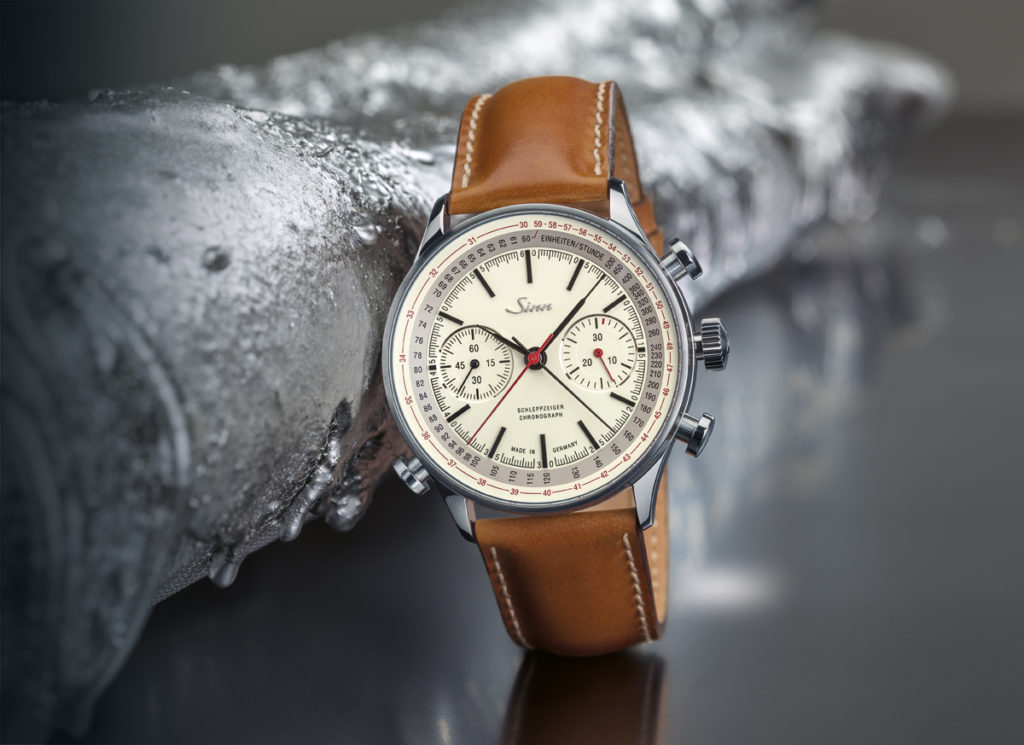
While Sinn offers various classic models, especially in its Frankfurt Financial District Watches collection, the Frankfurt-based brand is mainly known for its sporty watches and functional timepieces. Among these is also a remarkably elegant chronograph. The 910 Anniversary Split-Seconds Chronograph, our test watch, is well worth mentioning and deserves a strong recommendation for aficionados and collectors. This model, available in a limited edition of 300 pieces, is a rather rare item in the world of watches: a column-wheel chronograph with a split-seconds function at an affordable price of $6,330.
Carrying Along and Catching Up Require Stable Movement Constructions
You can hardly find anything comparable except for the noteworthy Double Felix from the small but fine Habring2 manufacture in Völkermarkt, Austria. This model is equipped with a hand-wound manufacture caliber and is priced at €7,750. And at the upper end of the scale is the A. Lange & Söhne Triple Split for $147,000, which has a triple rattrapante and flyback function in combination with numerous other technical refinements.
A split-second chronograph, also known as a double or rattrapante chronograph, has two elapsed-seconds hands, hence the name “double” chronograph. These twin hands can be started, stopped and reset to zero independently of each other, thus enabling you to tally intermediate times. The German term Schleppzeiger, which is written on the dial of our test watch and means “drag pointer,” emphasizes one aspect of a split-second chronograph: the first elapsed-seconds hand carries the second one along until the latter is halted independently of the former, which continues to move. The French term rattrapante, which means “recapture,” refers to the other aspect of this horological complication: the momentarily halted hand can be triggered to catch up with its companion, which continues measuring a lengthier elapsing interval.
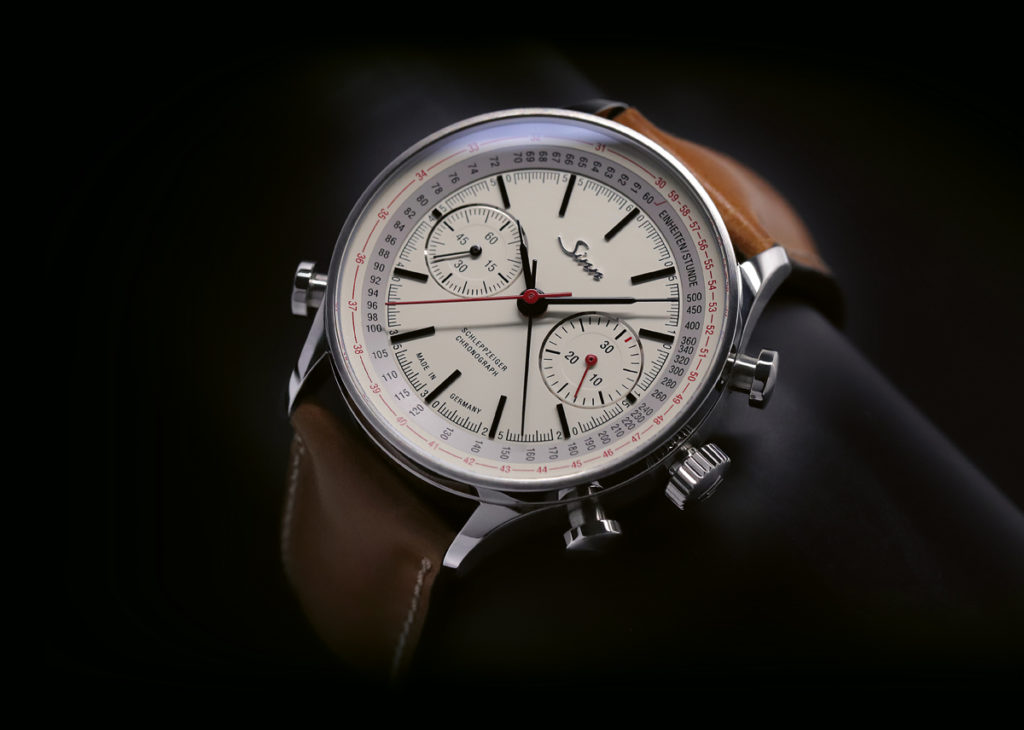
No matter whether the process is seen as “carrying along” or as “catching up,” a split-second chronograph requires a stable and flexible connection, which must also be economical with the limited supply of energy available to keep the movement running. The engineering difficulties begin with the extremely long shafts of the two elapsed-seconds hands, which must be painstakingly guided through the entire movement all the way up to the dial. The elapsed-seconds hand is affixed on the dial side to the chronograph’s central shaft, which is connected to the rattrapante heart. This heart’s job is to allow the catch-up elapsed-seconds hand to hurry toward its companion and resume running in synchrony with it after having been briefly stopped so an intermediate time could be read. The task of halting this slender needle is entrusted to a spring. When this spring is released, the halted hand speedily rejoins its companion.
What is briefly explained here is highly technically complex, which is why only a few manufacturers face the usually costly challenge of designing their own split-second construction. One of these is the Swiss movement manufacturer La Joux-Perret, formerly Jaquet, which has been part of Citizen Holding since 2012 and focuses on specialties and complex conversions of existing movements. One such conversion is a modification of ETA/Valjoux Caliber 7750, which La Joux-Perret equips with a column-wheel to control the chronograph’s functions and with two elapsed-seconds hands for the rattrapante function. Sinn encases this modified caliber inside its 910 Anniversary Split-Seconds Chronograph. In the past, similar modifications were found in watches offered by Hublot, Panerai, Vulcain, Hanhart and Graham. Presently, however, there are very few comparable models on the market, which also holds true for split-second chronographs in general. La Joux-Perret designates this caliber as number 8602-1. Sinn doesn’t use a specific designation of its own and uses the ETA/Valjoux 7750 as the basic movement, a fact that is engraved on the movement’s plate.
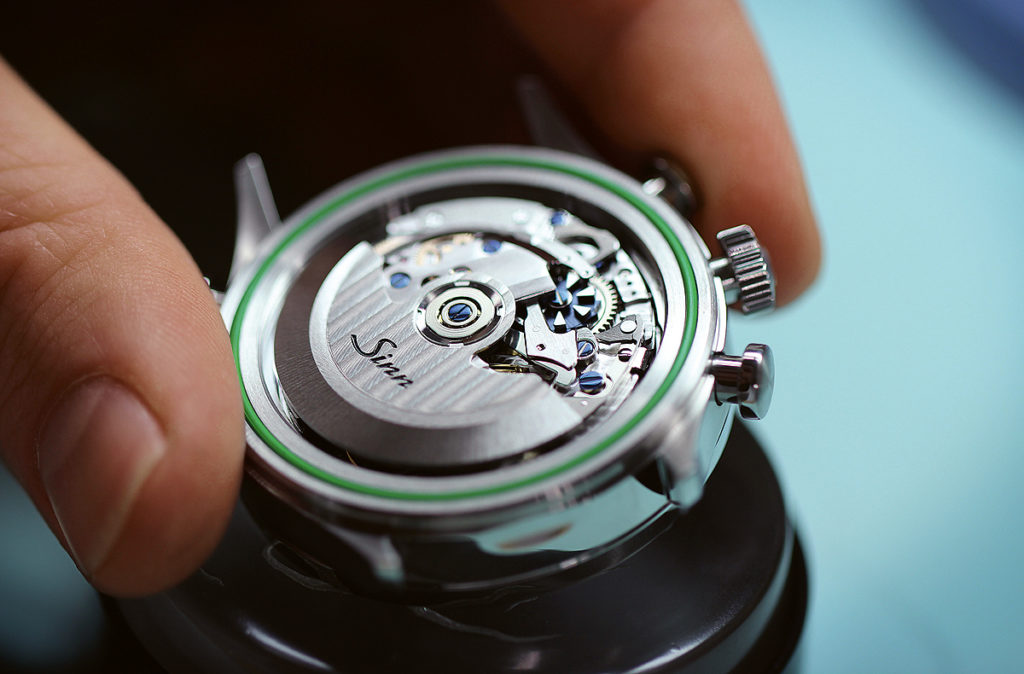
An Exclusive Movement Behind a Sapphire Crystal Inside A Manufacture Case
Connoisseurs who peer through the transparent pane of sapphire crystal in the fully threaded screw-in back of the 41.5-mm stainless-steel case from Glashütte-based SUG can feast their eyes on the seven pillars of the chronograph’s blued column-wheel, but the split-second mechanism remains out of sight. This movement boasts a Glucydur balance, blued screws and various embellishing patterns. We measured a daily gain of 3.5 seconds on the wrist and between 4 and 5 seconds on our timing machine. The rate also remained stable when the chronograph function was switched on. We observed similarly stable rate behavior on the wrist.
The chronographic functions of the 910 Anniversary are controlled by three pushers that look a bit like mushrooms or upside-down top hats. The third of these push-pieces is located at approximately 8 o’clock, which is in an unusual position for the trigger for the split-second function. Most makers of rattrapante chronographs place this button either at the 10 or in the crown, for instance, Habring2 opts for the 10 and Montblanc chooses the crown. Just like operating an ordinary chronograph, pressing the button at the 2 triggers the twin elapsed-second hands to begin running. But it is also possible to leave the second stop-seconds hand in its zero position by pressing the button at the 8 before starting the chronograph. If you press this button again, the motionless stop-seconds hand then jumps after its sweeping twin.

Pressing the button at the 2 triggers the synchronously running catch-up hand to stop moving, but this does not interrupt the continued clockwise motion of its companion. The starting, stopping and recapturing commands can be varied and repeated as often as desired. All commands are triggered smoothly and obeyed precisely. Only the zero-return reset button at the 4 offers a little more resistance, but this is not a problem. The chronograph’s central elapsed-seconds hand and its elapsed-minutes hand on the subdial at the 3 are colored red. This makes it easy to distinguish the ordinary elapsed-time hands from the additional rattrapante function. A red index stroke for the first elapsed minute on the subdial indicates that the rattrapante function is relevant only within a 60-second interval. This means that stopped intermediate times can be differentiated from one another in seconds and fractions of seconds.
The filigree stop-second needles, together with the two tachymeter scales on a fairly wide ring along the dial’s periphery, give this watch’s face an instrumental character and emphasize one of the primary applications for a split-second chronograph, i.e., measuring speeds, for example, at classic car rallies like the ones in which Sinn occasionally participates with its own teams. The second of the two tachymeter scales can likewise be used to measure speeds, but it’s calibrated for slower speeds of up to 30 kilometers per hour. As befits a watch from Sinn, the calibrations for the ordinary elapsed seconds are absolutely correct: three short intermediate strokes between each pair of longer indexes perfectly correspond to the 4-Hz frequency of the balance. Moreover, both elapsed-seconds hands extend exactly to the outer end of these slender indexes. The likewise slim minute hand for the main time bears a very thin tip, which is precisely long enough to reach the outer ends of the black applied hour indexes and thus also the outer ends of the printed strokes on seconds scale. The finely calibrated scales, the ensemble of needle-like hands and the beige tone of the dial all underline the retro look of this timepiece deliberately chosen by the manufacturer.
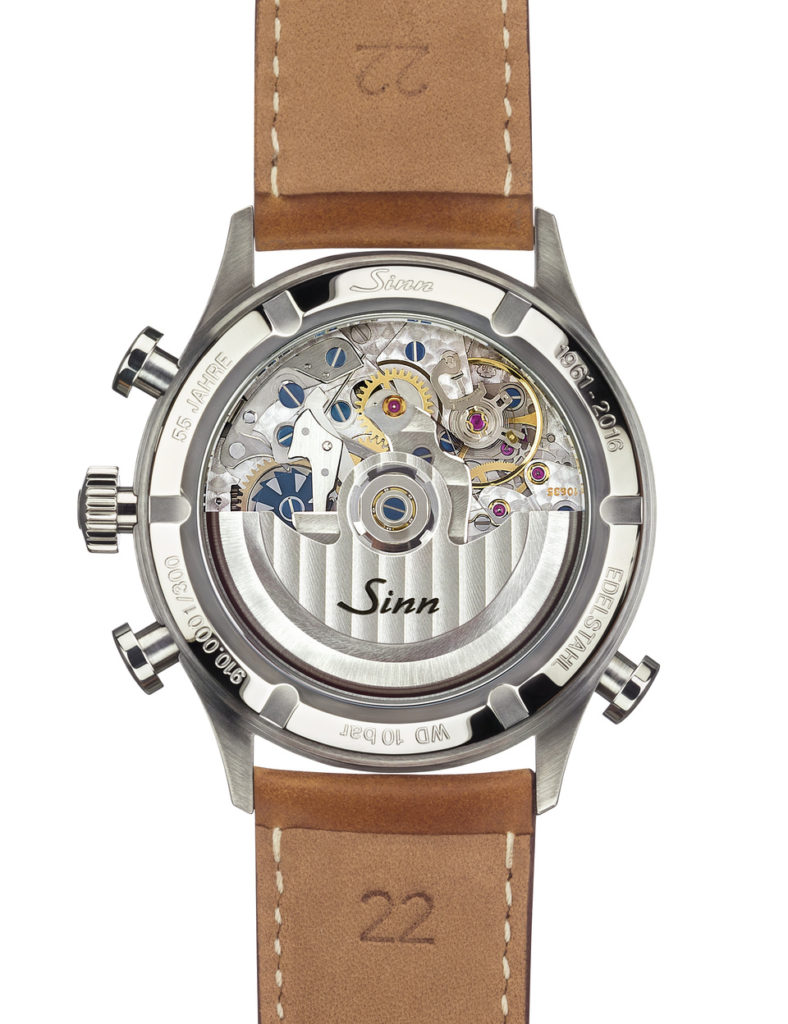
A Retro Stopwatch with a Good Price-performance Ratio
Last but not least, the light-brown leather strap adds to this wristwatch’s old-fashioned charm. Padded in its interior, crafted with contrastingly colored hand-sewn stitching and ending in a pin buckle, the strap reliably brings this split-second chronograph to its wearer’s wrist. The watch is also delivered with a solid stainless-steel bracelet, which further enhances this model’s unbeatable price-performance ratio.
SPECS:
Manufacturer: Sinn Spezialuhren GmbH, Wilhelm-Fay-Strasse 21, 65936 Frankfurt am Main, Germany
Reference number: 910
Functions: Hours, minutes, subdial for the continually running seconds hand, rattrapante chronograph (central elapsed-seconds hand for up to 30 elapsed minutes, central rattrapante hand), double tachymeter scale
Movement: ETA/Valjoux 7750, automatic, modified and equipped with a column wheel by La Joux-Perret (8602-1), 28,800 vph, 31 jewels, Glucydur balance, Nivarox hairspring, fine adjustment via Bipartite index, Nivarox shock absorption, 55-hour power reserve, diameter = 30.4 mm, height = 8.40 mm
Case: Stainless steel with sapphire crystal above the dial anti-reflectively treated on both sides, sapphire crystal caseback anti-reflectively treated on its inner surface, water resistant to 100 meters
Strap and clasp: Leather strap with pin buckle and solid stainless-steel bracelet
Rate results (deviation in seconds per 24 hours, fully wound/after 24 hours):
On the wrist +3.5
Dial up +6.7 / +4.0
Dial down +6.0 / +5.1
Crown up +2.6 / +2.6
Crown down +5.9 / +5.7
Crown left +4.5 / +3.5
Greatest deviation 4.1 / 3.1
Average deviation +5.1 / +4.2
Average amplitude:
Flat positions 337° / 308°
Hanging positions 310° / 275°
Dimensions: Diameter = 41.48 mm, lug width = 22 mm, height = 15.59 mm, weight = 110.0 grams
Limited edition of 300 pieces
Price: $6,330


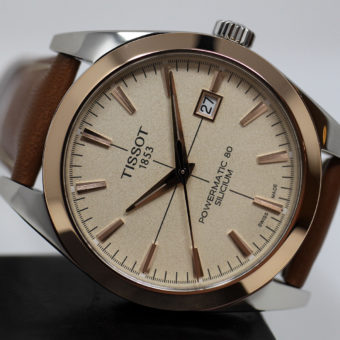
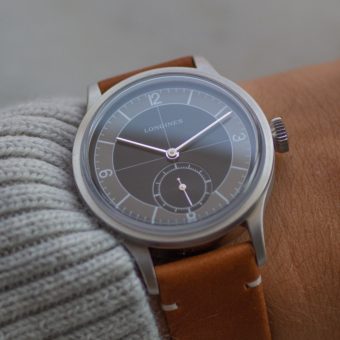



So this looks like the most inexpensive split-second chrono on the market today! Great for us who worship the Rattrapante!
Thank you for explaining this complication
For that price tag I`ll take a Breitling instead…
Love and want this watch but my piggy bank is short